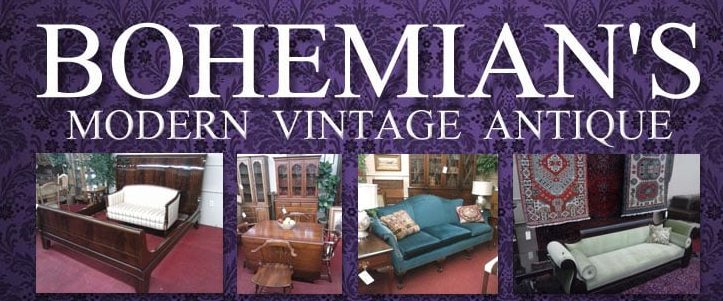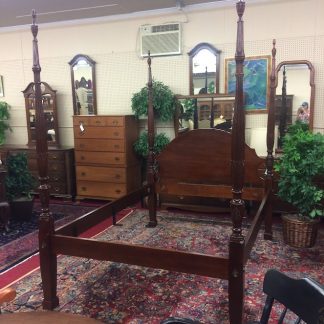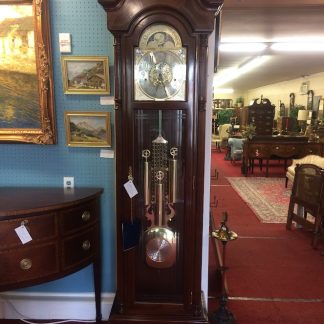
Are you a vintage enthusiast, always on the hunt for unique pieces that have stood the test of time? Look no further! In this guide, we will reveal the secrets to finding the best vintage store right in your neighborhood.
Vintage stores are like hidden treasure troves, teeming with one-of-a-kind clothing, accessories, and home decor items. Whether you’re searching for that perfect vintage Chanel handbag or a retro vinyl record, these stores have it all. But how do you uncover the hidden gems?
We understand the importance of finding the best vintage store that aligns with both your style and budget. Our article will walk you through the steps of exploring nearby vintage shops, from researching online to physically visiting each store. We’ll also provide insider tips on how to assess the quality and authenticity of vintage items, ensuring an enriching shopping experience.
The thrill of hunting for hidden treasures
Get ready to embark on a thrilling journey into the world of vintage shopping. From the nostalgic charm of the 1920s to the groovy vibes of the 1970s, every era has its treasures waiting to be discovered. Let’s dive in and find your hidden vintage gem today!
Why shop at vintage stores?
Vintage stores offer a plethora of benefits that make them a must-visit for anyone with an appreciation for history, craftsmanship, and individuality. Shopping at vintage stores allows you to step away from the mass-produced fashion and homeware items that dominate today’s market. Instead, you can embrace unique pieces that tell a story and stand out from the crowd. Vintage shopping is a way to express your personal style while contributing to a more sustainable and eco-friendly lifestyle. By giving these pre-loved items a new home, you are reducing waste and embracing the circular economy. The thrill of finding that special piece and the sense of nostalgia associated with vintage shopping are additional bonuses that make the experience truly remarkable.
Researching online for local vintage stores
The first step in your quest to find the best vintage store near you is to conduct thorough online research. Start by searching for vintage stores in your area on popular search engines and social media platforms. Many vintage stores have their own websites or social media profiles where they showcase their inventory and provide information about their location, opening hours, and contact details. Take the time to explore these online platforms, as they can give you a glimpse into the store’s aesthetic, collection, and overall vibe. While online research is a great starting point, keep in mind that it’s just the tip of the iceberg. The real treasure awaits you in person.
Asking for recommendations from locals and friends
Next, tap into the power of local knowledge by seeking recommendations from locals and friends. Vintage stores often have a dedicated following within the community, and word-of-mouth referrals can lead you to hidden gems that may not be easily discoverable online. Reach out to friends who share your love for vintage shopping and ask them about their favorite stores. You can also join online forums, social media groups, or local vintage enthusiast communities to connect with like-minded individuals who can provide valuable insights and recommendations. Don’t be shy to ask for specific details, such as the store’s specialty or any unique offerings they may have. This personalized approach can lead to remarkable discoveries.
Exploring flea markets and thrift stores
Flea markets and thrift stores are veritable goldmines for vintage enthusiasts. These bustling marketplaces are often brimming with a wide array of vintage treasures waiting to be discovered. Research local flea markets and thrift stores in your area and make a plan to visit them. Keep in mind that these markets may have specific days or hours of operation, so it’s essential to plan your visit accordingly. When exploring flea markets and thrift stores, it’s important to have an open mind and be prepared to dig through racks and shelves. The thrill lies in the unexpected and serendipitous finds that await you. Take your time, enjoy the atmosphere, and engage with vendors who may have valuable insights or stories behind the items they sell.
Attending vintage fairs and events
Vintage fairs and events are another fantastic avenue for discovering the best vintage stores near you. These events attract a curated selection of vintage vendors, offering a treasure trove of unique items in one convenient location. Research local vintage fairs and events happening in or around your area and mark them on your calendar. Attending these events not only allows you to explore a wide range of vintage items but also provides an opportunity to connect with fellow vintage enthusiasts, collectors, and sellers. Strike up conversations, ask questions, and immerse yourself in the vibrant vintage community. You never know what valuable connections and discoveries may come your way.
How to find the best vintage store near you
While vintage shopping is an exciting adventure, it’s essential to approach it with a discerning eye to ensure you’re getting high-quality and authentic items. Here are some tips to help you evaluate the items you come across:
1. Inspect the condition: Thoroughly examine the item for any signs of wear, damage, or alterations. Vintage items may have minor imperfections, but excessive damage or alterations can impact their value and longevity.
2. Check labels and markings: Look for labels, tags, or markings that indicate the brand, designer, or era of the item. Researching these details can help you determine its authenticity and value.
3. Feel the fabric: Vintage clothing often features unique fabrics and textures. Familiarize yourself with different fabrics and their characteristics to assess the quality of the item.
4. Examine the stitching: Quality vintage pieces are typically well-made, with attention to detail in the stitching. Check for even, secure stitching and any signs of repair or alteration.
5. Ask for provenance: If possible, inquire about the item’s history or provenance. Knowing the backstory of a piece can add to its charm and value.
Remember, not every vintage item will be in perfect condition, but that’s part of the allure. Embrace the character and uniqueness that comes with age, while ensuring that the item is still in a wearable or usable condition.
Researching online for local vintage stores
In conclusion, uncovering the hidden treasures of the best vintage store near you requires a combination of online research, local recommendations, exploration of flea markets and thrift stores, and attending vintage fairs and events. By immersing yourself in the world of vintage shopping, you can embrace the unique and timeless charm that vintage items bring to your wardrobe and home. Remember to evaluate the quality and authenticity of items to ensure a rewarding shopping experience. So, don your detective hat, embark on your vintage adventure, and let the hidden treasures of the past enrich your present. Happy vintage hunting!
Asking for recommendations from locals and friends
When it comes to finding the best vintage store near you, the internet is your best friend. Start by conducting a thorough online search using keywords like “vintage stores near me” or “best vintage shops in Waynesboro Pennsylvania.” This will provide you with a list of potential stores to explore. We ofcourse will rcommend a stop to our own antique and vintage store Bohemians, they offer a great selection of refurbished specialty antique furniture pieces at the best prices near you now.
Make sure to check out the store’s website or social media pages. Look for reviews from previous customers to get an idea of their reputation. Pay attention to the types of items they specialize in and if they have any special events or sales. This will help you narrow down your options and find stores that align with your preferences.
Additionally, online platforms like Etsy and eBay can be great resources for finding vintage items. These platforms allow you to browse through a wide range of products from various sellers. However, be cautious and verify the authenticity and quality of the items before making a purchase.
Remember, the goal is to find a vintage store that offers a curated selection of high-quality items that resonate with your personal style. Take your time to research and compile a list of potential stores to visit.
Exploring flea markets and thrift stores
Sometimes, the best recommendations come from those who are already familiar with the local vintage scene. Reach out to friends, family, and colleagues who share your love for vintage fashion or decor. They might have insider knowledge about hidden gems in your area that you wouldn’t find through online research alone.
Social media can also be a valuable tool for gathering recommendations. Post a query on platforms like Facebook or Instagram, asking for suggestions on the best vintage stores in your city. You’ll be surprised by the number of responses you receive, each with their own unique suggestions and experiences.
Don’t hesitate to engage with the recommendations you receive. Ask the individuals who provide suggestions about their favorite finds or any tips they may have for successful vintage shopping. Building a network of vintage enthusiasts can not only enhance your shopping experience but also lead to lasting friendships.
Attending vintage fairs and events
Flea markets and thrift stores are treasure troves of vintage finds. These bustling marketplaces are home to a diverse range of vendors selling everything from clothing to furniture. The best part? You never know what hidden gems you might stumble upon.
To make the most of your flea market or thrift store experience, it’s essential to arrive early. Many vendors bring out their best items at the beginning of the day, so being an early bird increases your chances of finding something truly special. Take your time to browse through each stall, keeping an eye out for unique pieces that catch your attention.
Haggling is also an important aspect of flea market and thrift store shopping. Don’t be afraid to negotiate the price, especially if you feel it’s too high. Most vendors expect some level of bargaining, so be polite but firm in your negotiations. Remember, the goal is to get the best value for your money while respecting the seller’s business.
Evaluating the quality and authenticity of items
Vintage fairs and events are a haven for vintage enthusiasts. These events bring together a curated selection of vendors, showcasing their best vintage items in one convenient location. Attending these fairs not only allows you to explore a wide range of vintage products, but it also gives you the opportunity to connect with like-minded individuals.
Stay updated on upcoming vintage fairs and events in your area by following local vintage stores on social media or subscribing to their newsletters. These events often have a festive atmosphere, with live music, food trucks, and even fashion shows. It’s a chance to immerse yourself in the vintage culture and gain inspiration for your own personal style.
When attending vintage fairs, come prepared with a budget and a specific list of items you’re searching for. The variety can be overwhelming, and it’s easy to get carried away. Having a plan in mind will help you stay focused and make the most of your time at the event.
Conclusion: Embrace the unique and timeless charm of vintage shopping
One of the challenges of vintage shopping is ensuring the quality and authenticity of the items you purchase. To avoid disappointment, it’s important to develop an eye for detail and learn how to assess the condition of vintage pieces.
When examining clothing, carefully inspect the fabric for any signs of wear, such as holes, stains, or loose threads. Check the seams to ensure they’re intact, as repairs can significantly affect the value of a vintage item. Additionally, pay attention to the sizing, as vintage clothing often varies from modern sizing standards.
For accessories, examine any hardware or embellishments for signs of rust or damage. Vintage handbags should have sturdy handles and functional closures. Jewelry should be inspected for missing stones or signs of tarnish.
When it comes to furniture or home decor items, check for stability and structural integrity. Look for any signs of damage, such as scratches, dents, or wobbly legs. Keep in mind that minor wear and tear can add character to vintage pieces, but extensive damage may not be worth the investment.
If you’re unsure about the authenticity of a vintage item, don’t hesitate to seek expert advice. Vintage experts or appraisers can provide valuable insights into the origin and value of an item. It’s better to be cautious and make an informed decision rather than ending up with a counterfeit or overpriced piece.


